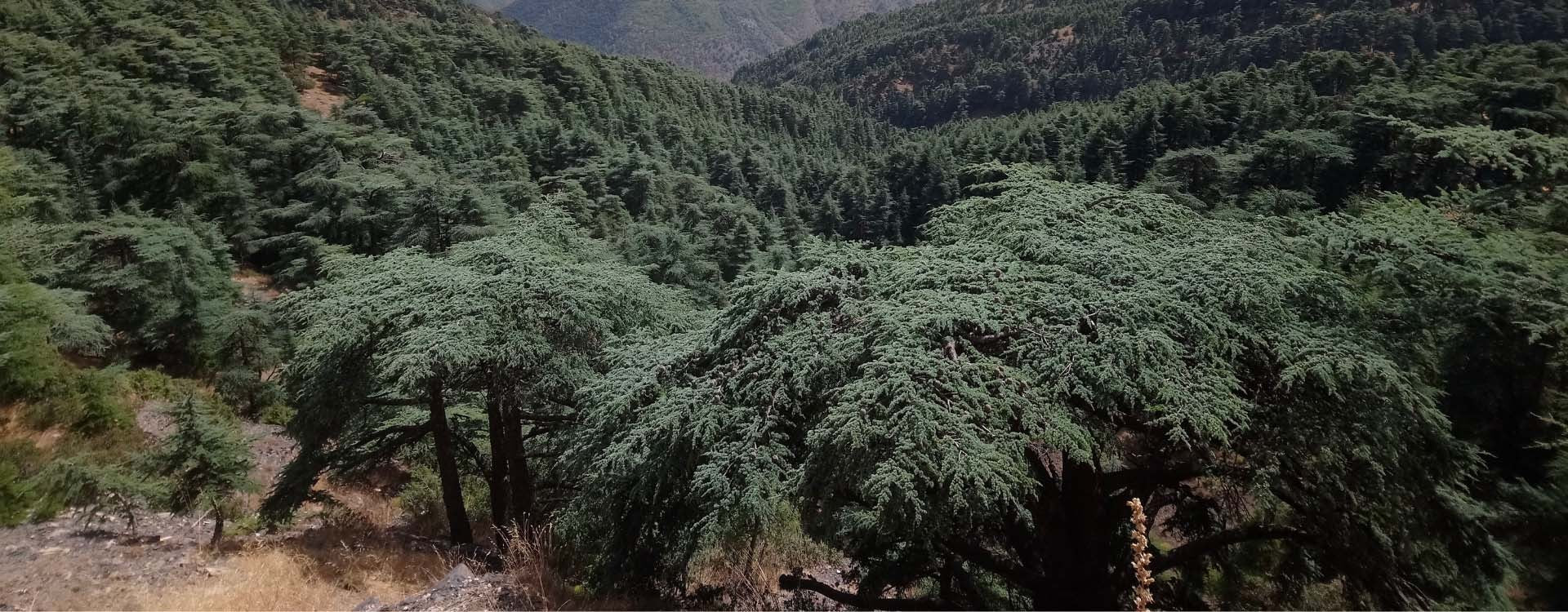Atlas Cedar: The power of the thousand-year-old tree

Origin and description
The Atlas Cedar, also known as Cedrus atlantica, is a majestic tree native to the Atlas Mountains in North Africa. One of the most emblematic cedar species, it is often associated with these mountainous regions.
In terms of physical characteristics, the Atlas Cedar stands out for its imposing stature and massive trunk, capable of reaching a remarkable circumference. The tree's needles are short and arranged in dense rosettes, creating a lush, green canopy. Cedar cones are oblong in shape, with thick scales. These cones contain the tree's seeds and are often used as a symbol of the species.
The Atlas Cedar plays an essential role in the region's natural ecosystems. It provides habitat for a variety of creatures, including birds and small mammals. What's more, its fallen needles provide a natural carpet that helps regulate soil moisture and prevent erosion.
Beyond its ecological value, the Atlas Cedar is deeply rooted in the culture and history of the regions where it grows, bearing witness to the splendor of nature and the symbiosis between man and his natural environment for millennia.
History and symbolism
With a history stretching back thousands of years, the Atlas Cedar is closely linked to many ancient civilizations. Historical references to this majestic tree date back to antiquity. It is mentioned in biblical texts such as the Bible, where cedar wood was used in the construction of Solomon's Temple in Jerusalem, a symbol of grandeur and nobility.
In ancient mythologies and cultures, Atlas Cedar also occupies a special place. In Greek mythology, it was associated with the goddess Artemis, the protector of nature and wildlife, reinforcing her link with the wilderness. Similarly, in Egyptian mythology, Atlas Cedar was used to make sarcophagi for the pharaohs, symbolizing eternity and resurrection.
Today, Atlas Cedar continues to hold powerful symbolism in contemporary societies. It is often seen as a symbol of strength, longevity and wisdom. The tree is also associated with environmental protection and nature preservation, and is used as an emblem in various conservation and reforestation campaigns.
In short, the history and symbolism of Atlas Cedar have been deeply rooted in human culture for centuries, testifying to the enduring relationship between man and nature, as well as its rich historical and cultural connotations.
Traditional uses
Atlas Cedar has played an essential role in many spheres of human life throughout the ages. Its traditional uses have been diverse and multifunctional.
First and foremost, Atlas Cedar wood has been widely used in construction. Its natural durability, fine grain and pleasant aroma make it a valuable material for furniture, interior coverings and handicrafts. It has also been used to build ships, thanks to its resistance to insects and rot.
Atlas Cedar essential oil, extracted from the leaves and wood of the tree, has been appreciated for its medicinal and therapeutic properties. It has been used in traditional medicine to treat a variety of health problems, such as skin disorders, respiratory problems and stress. Atlas Cedar essential oil is also recognized for its soothing properties, promoting relaxation and general well-being.
In the field of perfumery and skincare products, Atlas Cedar has found its place as a precious ingredient. Its woody, resinous aroma is often used as a base note in fragrances, adding a unique depth and persistence. What's more, its astringent properties make it a popular choice for skin care products, helping to regulate sebum and tone the skin.
The traditional uses of Atlas Cedar bear witness to its versatility and many contributions to everyday life, whether in construction, traditional medicine or the beauty industry.
Conservation and challenges
The Atlas Cedar, despite its long history and inestimable value, faces a number of significant threats. Over-exploitation, forest clearance, conversion of land to agricultural use and climate change are all factors endangering the survival of this emblematic species.
Overexploitation of Atlas Cedar timber for construction and other commercial uses has led to a drastic reduction in its population in some regions. Unsustainable harvesting practices have also contributed to this threat.
Forest clearance for agricultural expansion and infrastructure construction has drastically reduced the natural habitat of the Atlas Cedar. This loss of habitat has serious consequences for biodiversity, endangering many plant and animal species that depend on cedar forests.
Climate change has also had a negative impact, with increasingly frequent temperature variations and droughts, making it difficult for trees to regenerate naturally.
Fortunately, conservation and reforestation initiatives are underway to protect the Atlas Cedar. Many countries and organizations are working to restore forest habitats, promote sustainable management of forest resources and raise awareness of the importance of preserving this species.
The preservation of the Atlas Cedar is of crucial importance. In addition to its ecological value as a habitat for numerous species, this tree plays a vital role in combating soil erosion and regulating watersheds. As a cultural and historical symbol, its preservation is also essential for maintaining the cultural identity and biodiversity of the Mediterranean region.
In short, the conservation of the Atlas Cedar is a vital undertaking that requires concerted action on a local and international scale to preserve this age-old natural treasure.



